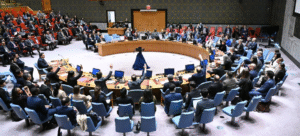The Unfolding Inferno: Wildfires Grip the US Southeast
A Blaze Near the Coast: Threat to Myrtle Beach
The early days of March 2025 witnessed a stark reminder of nature’s untamed power as significant wildfires erupted across the southeastern United States, particularly in South Carolina and North Carolina. These blazes, fueled by a combination of dry conditions, gusty winds, and perhaps human negligence, painted a dramatic and dangerous picture, forcing evacuations, threatening communities, and prompting South Carolina Governor Henry McMaster to declare a state of emergency. The unfolding inferno served as a potent symbol of the increasing risks associated with changing climate patterns and the ever-present vulnerability of human settlements to natural disasters. The geographical focus of these wildfires, concentrated in the Carolinas and notably near the popular tourist destination of Myrtle Beach, underscored the potential for widespread disruption. Myrtle Beach, known for its bustling coastal life and vibrant communities, faced the immediate threat of encroaching flames, necessitating the difficult decision to evacuate residents and visitors from endangered towns. The image of families being uprooted and livelihoods put on hold served as a stark contrast to the region’s usual tranquil atmosphere. The proximity to populated areas amplified the urgency of the situation, demanding swift and decisive action from local and state authorities.

State of Emergency: Mobilizing Resources
Governor Henry McMaster’s declaration of a state of emergency was a crucial step in mobilizing resources and coordinating the response to the escalating crisis. This declaration likely facilitated the deployment of additional firefighting personnel, equipment, and logistical support to the affected areas. It also empowered state agencies to take necessary measures, such as implementing road closures and allocating funds for emergency relief efforts. This decisive action highlighted the seriousness of the threat and the commitment of the state government to protecting its citizens and infrastructure.
Environmental Factors: Fueling the Flames
The eruption of these wildfires is likely a complex interplay of environmental factors. Prolonged periods of dry weather can parch vegetation, creating an abundance of readily flammable fuel. Strong winds can then act as a catalyst, rapidly spreading flames across the landscape and making firefighting efforts significantly more challenging. While the specific causes of these particular fires were yet to be fully determined in the initial reports, the broader context of changing climate patterns suggests an increased frequency and intensity of such events in many parts of the world. Warmer temperatures and altered precipitation patterns can contribute to drier conditions and longer fire seasons, posing a growing threat to both natural ecosystems and human settlements.
Immediate Consequences: Lives, Livelihoods, and Nature
The immediate consequences of these wildfires were multifaceted and deeply impactful. Beyond the direct threat to lives and property, the blazes likely caused significant damage to natural habitats, impacting local wildlife and ecosystems. The smoke plumes emanating from the fires would have also posed a serious health hazard to residents in the surrounding areas, potentially leading to respiratory issues and other health complications. Furthermore, the economic repercussions, particularly for a tourism-dependent area like Myrtle Beach, could be substantial, with disruptions to businesses and potential long-term impacts on the region’s appeal.
The Human Response: Bravery and Resilience
In the face of this unfolding crisis, the response efforts of firefighters, emergency responders, and volunteers would have been critical. Battling wildfires is a dangerous and demanding task, requiring immense courage, skill, and coordination. The dedication of these individuals in working tirelessly to contain the flames, protect communities, and minimize damage is often a source of profound inspiration during such challenging times. The resilience of the affected communities, as they faced displacement and uncertainty, would also be a testament to the human spirit in the face of adversity.
A Lingering Threat: Lessons Learned
The wildfires that gripped the US Southeast in early March 2025 served as a stark reminder of the potent and unpredictable forces of nature. The situation in South Carolina and North Carolina, particularly the threat to areas near Myrtle Beach and the subsequent declaration of a state of emergency, underscored the vulnerability of even well-developed regions to such disasters. As investigations into the causes continued and firefighting efforts pressed on, the event undoubtedly left a lasting impact on the affected communities and served as a critical reminder of the ongoing need for effective wildfire prevention, preparedness, and response strategies in an era of increasing environmental challenges.




















